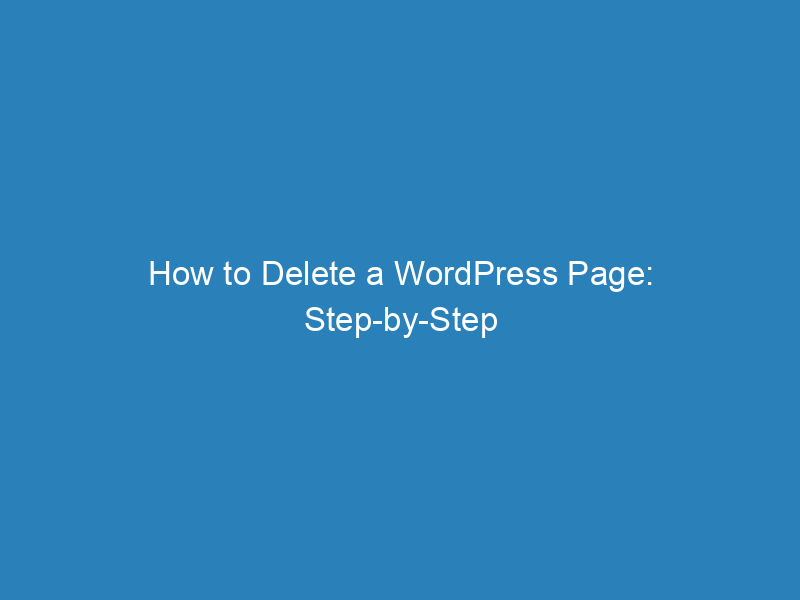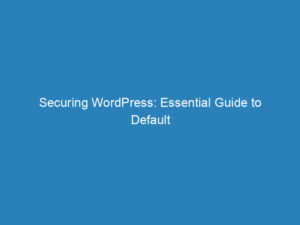
How to Delete a WordPress Page: Step-by-Step Guide with SEO Considerations
Managing your WordPress site often involves the need to delete pages. Whether you’re tidying up outdated content, removing duplicates, or restructuring your site, keeping your pages organized is crucial. However, it’s essential to handle page deletions carefully to avoid potential SEO pitfalls, such as broken links that can negatively affect your search engine rankings.
Why Delete a WordPress Page?
Before we get into the nitty-gritty of deleting a page, let’s explore some common reasons you might consider this action:
- You accidentally created a page and want to remove it.
- The content is no longer relevant or useful to your audience.
- You want to streamline your website by eliminating similar or redundant pages.
- The page violates your website’s terms of service or privacy policy.
- The information on the page is outdated and needs to be either updated or removed.
- The page might be causing technical conflicts with other content on your site.
Regardless of the reason, deleting a WordPress page is a straightforward process that can help keep your website clean and efficient.
Steps to Delete a WordPress Page
Now, let’s walk through the steps to delete a page from your WordPress site.
1. Log in to Your WordPress Dashboard
Start by logging into your WordPress admin area. Enter your username and password to access the dashboard.
2. Navigate to the Pages Section
In the left sidebar of your dashboard, locate and click on the Pages option. This will present you with a list of all the pages on your site.
3. Delete the Page
Scroll through the list or use the search bar to find the specific page you wish to delete. Below the page title, you’ll see several options; click on Trash to move the page to the trash bin.
If you want to delete multiple pages at once, select the desired pages using the checkboxes, choose Move to Trash from the bulk actions dropdown, and click Apply.
You can also delete a page directly from the editing screen by selecting Move to Trash. This action moves it to the trash but does not delete it permanently.
4. Empty the Trash (Optional)
Pages moved to the trash can be restored if needed. If you’re sure you want to permanently delete them, go to the Trash tab, hover over the page you want to delete, and click Delete Permanently.
If you prefer to clear all items in the trash at once, click on the Empty Trash button. Keep in mind that once a page is deleted from the trash, it cannot be recovered, so double-check before proceeding.
Redirecting Deleted Pages for SEO Purposes
Redirecting deleted pages to a new URL is vital for maintaining your site’s SEO integrity and avoiding broken links. If you’re using the Rank Math SEO plugin, it can help you redirect deleted pages to another relevant page, preserving your link value and providing a better user experience.
Upon deleting a page, the Rank Math SEO plugin will prompt you to redirect to a new URL. This could be a revised version of the deleted content or an existing page that eliminates duplication.
Steps to Set Up Redirection
1. Install and Configure Rank Math SEO Plugin
To begin with, ensure that the Rank Math SEO plugin is installed and activated on your WordPress dashboard. Follow the setup wizard to configure it for your website.
2. Enable the Redirections Module
Access the Rank Math SEO → Dashboard and enable the Redirections module to activate its features.
3. Access the Redirections Page
Once enabled, locate the Redirections option in the left sidebar under Rank Math SEO to access the redirection settings.
4. Add a New Redirection
On the redirection page, click the Add New button to create a new redirect. In the Source URLs field, input the URL of the deleted page (e.g., if it was “https://example.com/deleted-page,” enter “/deleted-page”). In the Destination URL field, specify the URL of the active page to redirect traffic from the deleted page.
Select the 301 Permanent Move option as the redirection type, indicating to search engines that the page has permanently moved to a new location. Configure any additional options as necessary and click Add Redirection.

